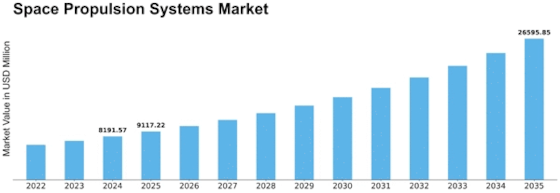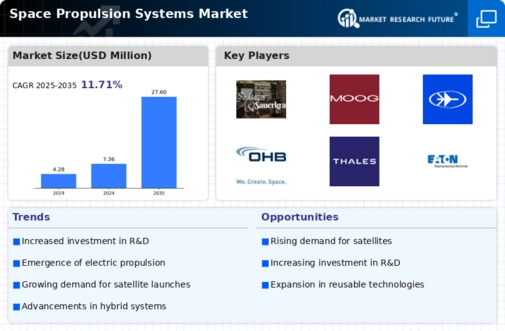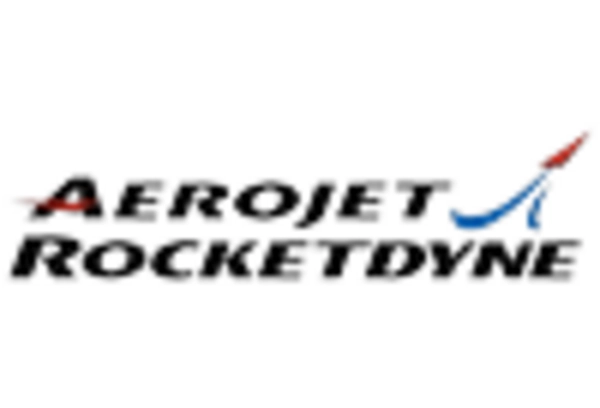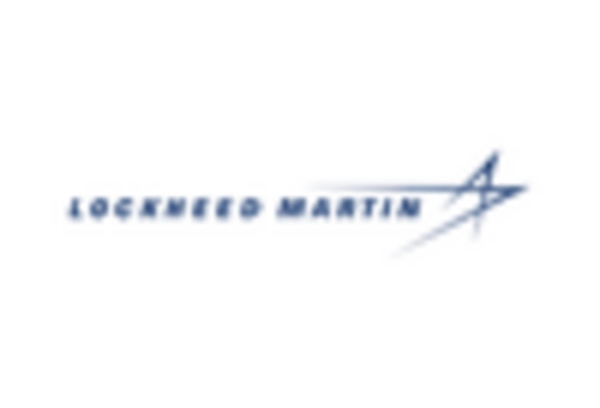Space Propulsion Systems Size
Space Propulsion Systems Market Growth Projections and Opportunities
The space propulsion systems market is influenced by several key factors that shape its growth and development. Propulsion systems are critical components of space missions, providing the necessary thrust to propel spacecraft into orbit, maneuver in space, and travel to distant destinations within the solar system and beyond. One of the primary drivers of the space propulsion systems market is the increasing demand for satellite deployment, space exploration, and space transportation services by government space agencies, commercial aerospace companies, and research institutions. As space missions become more ambitious and complex, there's a growing need for advanced propulsion technologies that offer greater efficiency, reliability, and performance to meet mission requirements.
Furthermore, advancements in propulsion technology, including improvements in propulsion efficiency, thrust-to-weight ratio, and specific impulse, have expanded the capabilities and applications of space propulsion systems, driving further adoption across the space industry. New generations of propulsion systems, such as electric propulsion, ion propulsion, and nuclear propulsion, offer higher performance and longer operational lifetimes compared to traditional chemical propulsion systems, enabling more efficient and cost-effective space missions. This drives demand for advanced propulsion systems among space agencies and aerospace companies seeking to enhance mission success, reduce mission costs, and extend the operational lifespan of spacecraft and satellites.
Moreover, the growing trend towards space commercialization and the emergence of new markets and opportunities in space tourism, satellite servicing, and lunar exploration are driving investment and innovation in the space propulsion systems market. As commercial space companies and startups enter the space industry, there's a growing demand for propulsion systems that can support a wide range of commercial applications, including satellite deployment, space tourism, in-space manufacturing, and asteroid mining. This creates opportunities for propulsion system manufacturers to develop specialized propulsion solutions tailored to the needs of commercial customers and emerging space markets.
Additionally, the increasing collaboration and partnership between government space agencies, commercial aerospace companies, and international space organizations are driving innovation and investment in space propulsion technology. Collaborative efforts such as public-private partnerships, technology transfer agreements, and joint research initiatives enable stakeholders to leverage expertise, resources, and capabilities to accelerate the development and deployment of advanced propulsion systems for space exploration and transportation. This fosters a collaborative ecosystem that supports innovation, competition, and growth in the space propulsion systems market.
Furthermore, the growing emphasis on sustainability and environmental responsibility in space exploration and satellite deployment is driving interest in green propulsion technologies that minimize environmental impact and space debris. Green propulsion systems, such as electric propulsion and solar sails, utilize non-toxic propellants and renewable energy sources to reduce pollution and minimize the risk of contaminating the space environment. As space agencies and satellite operators prioritize sustainability and space debris mitigation, there's a growing demand for green propulsion systems that offer cleaner, safer, and more sustainable alternatives to traditional chemical propulsion systems.


















Leave a Comment